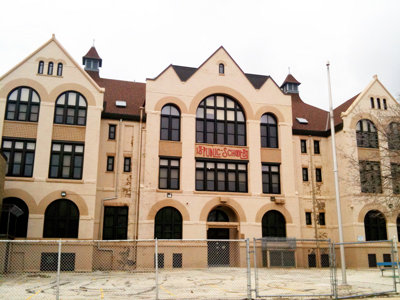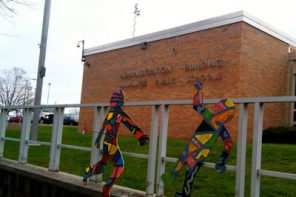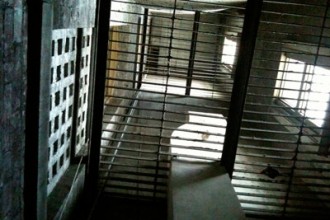I’ve always been interested in school buildings and that interest got a boost when I saw the lovely tile work and decoration at architect Guy Wiley’s Milwaukee French Immersion School, built on 52nd Street as Steuben Junior High School in 1929.
So, when I drive past a building like the old Garfield Avenue School, 2215 N. 4th St., which I do a few times each week, I’m intrigued. Garfield is an especially lovely old building and one that appears to still be in pretty good shape. Because it was in use from its construction in 1887 through 2006, it was maintained.
And that’s a good thing because the building is a piece of Milwaukee architectural history.
It was designed by Henry C. Koch, who is best known in town for a little place we like to call City Hall. Koch also designed Turner Hall, The Pfister Hotel, Marquette’s Gesu Church and other buildings here and beyond.
Born in 1841, Koch served as a topographic engineer for General Sheridan during the Civil War. Koch was a devotee of Romanesque Revival style and was a disciple of Henry Hobson Richardson, the namesake of a movement that came to be called Richardsonian Revival.
Koch earned a number of school building commissions, including the early Fourteenth District School on 18th and Wells, which was constructed in the late 1870s.
Look at Turner and City Hall and Garfield Avenue School — as well as its companion, Golda Meir School (which was called Fourth Street School when it opened three years after Garfield), also a Koch work — and you will be struck by the commonalities: the arches over the windows, the peaks, the sets of triple windows.
“The Garfield Avenue building was designed with a central hallway around which light filled rooms were grouped in irregular clusters,” according to “Built in Milwaukee: An Architectural View of the City,” edited by Randy Garber.
“The exterior of the structure was a late-nineteenth century caricature of Palladianism in that it was composed of three oddly asymmetrical masses. Furthermore, the masses were articulated by tripartite window systems, which were hugely overscaled. The impression given is that the building is lighter than it should be.”
Garfield Avenue School, which was originally designated Public School No. 27 and also served as North Girls Junior Trade from 1936 to 1953, has been on the National Register of Historic Places since 1984.
The city has a number of architecturally and historically interesting school buildings. Watch this space and I’ll try to bring you more.
Soon I hope to get inside Garfield, as well as a WPA-era gem of a school — that is also now closed — that boasts fireplaces, bas relief, built-in sandboxes and other features.


 i evaluate to yes even if there's no image
i evaluate to yes even if there's no image  i evaluate to yes even if there's no image
i evaluate to yes even if there's no image  i evaluate to yes even if there's no image
i evaluate to yes even if there's no image  i evaluate to yes even if there's no image
i evaluate to yes even if there's no image  i evaluate to yes even if there's no image
i evaluate to yes even if there's no image  i evaluate to yes even if there's no image
i evaluate to yes even if there's no image 